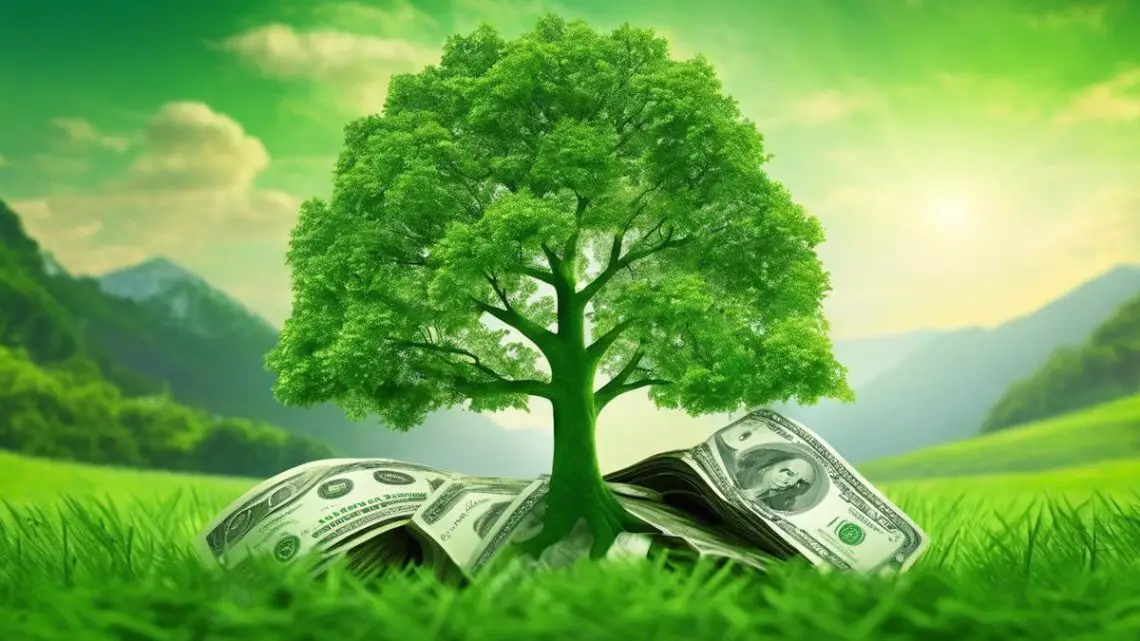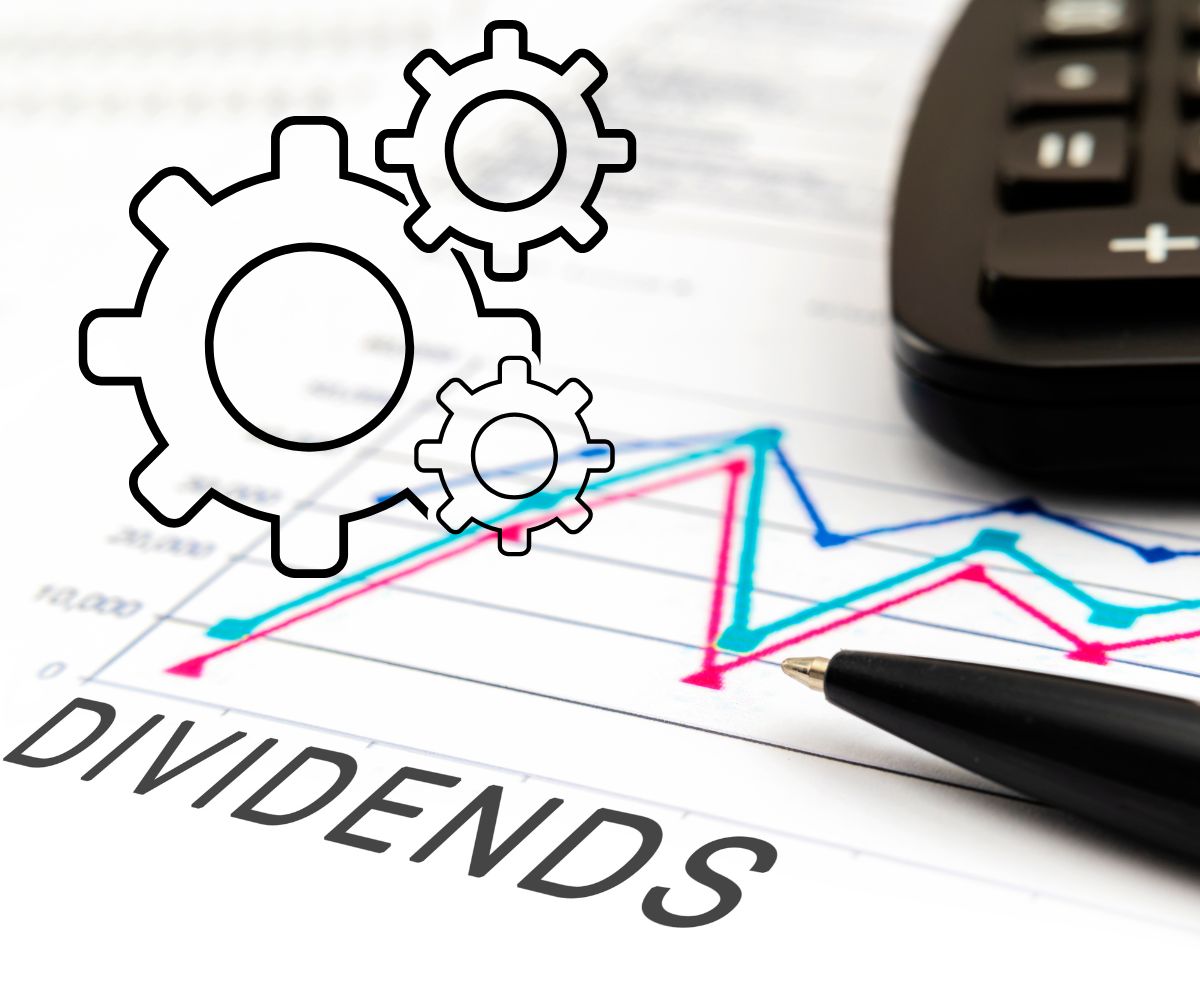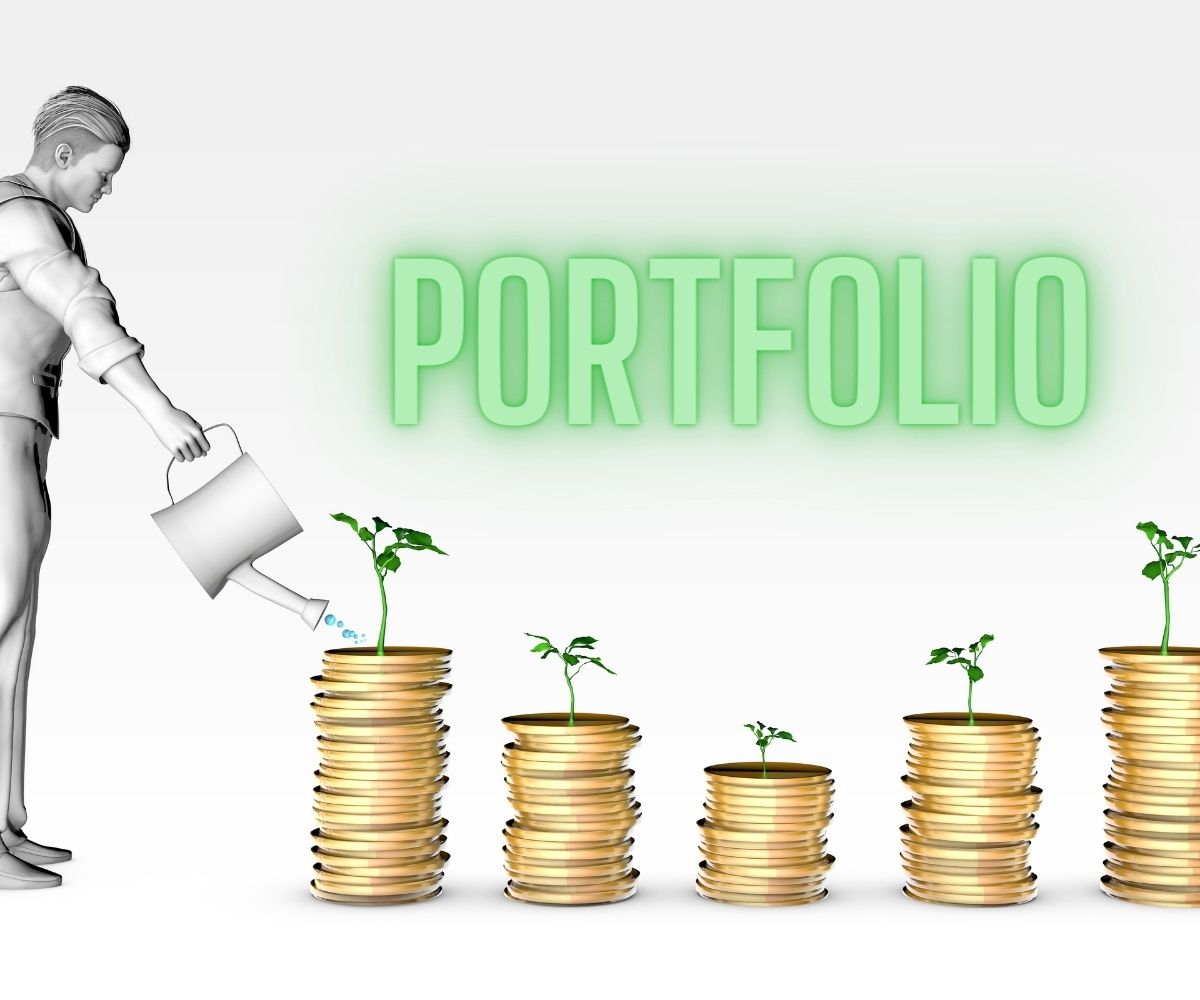
Green Dividend Stocks: The Comfort Food of Investing in a Sustainable Future
March 5, 2024 0 By Jake BanksVenturing into the realm of stocks can be complex, but consider it an exciting exploration, particularly when we delve into the green sector. As a journalist with keen interest in this field, not a financial expert, I’m here to share insights on dividend stocks. Picture these as your funds’ best pals, rewarding you with a cash bonus simply for holding them. Who wouldn’t enjoy a little extra money, right? Here’s the interesting part – our focus is on green companies, those committed to environmental stewardship and conservation. Let’s unravel this financial package together and discover why investing your dollars into these environmentally-friendly entities may potentially make your financial portfolio greener too.
Understanding Dividend Stocks in the Green Sector
What’s the Deal with Dividends in Green Stocks?
Hey there, eco-minded investors! You’re probably eyeing those green stocks, and I hear you. We all want to back companies that are kind to Mother Earth, right? But let’s chit-chat about something that often tags along with investing: dividends. Now, what’s the big deal with dividends when it comes to green stocks? Let’s dig in.
First up, let’s chat about dividends. Picture them as a little “thank you” note from a company. You own a slice of the company, and they toss some profits your way, usually as cash or extra shares. Pretty cool, huh? It’s like getting a bonus for being on the team.
Now, turn your attention to green stocks. These are shares from companies doing their bit for the planet. We’re talking renewable energy, recycling, and all that good eco-friendly stuff. Investing in these companies is hot right now because it’s like you’re helping the planet and your wallet.
But here’s where it gets interesting: green companies are often quite young and they’re typically more focused on growing and reinvesting profits than handing out dividends. They’re like that friend who’s always on the go, pumping cash into big projects, not chilling out and paying dividends.
That said, not all green companies skip the dividend dance. Some established players have been in the green game long enough to start sharing the wealth. Think big utilities that have gone green or those with solid foundations in energy efficiency.
Income Potential? Well, that depends. If you find those seasoned green companies that do pay dividends, you could get a decent return. But remember, dividends in green companies can be as unpredictable as the weather. If the company hits a rough patch, dividends might shrink or even disappear for a while.
Given the focus of this site being hydrogen, it’s worthwhile to spotlight several companies actively involved in the H2 sector. Here’s a list of hydrogen companies that pay a dividend. Please be informed that this data is accurate at the time of writing and may alter with time.
Hydrogen Stocks Pay Dividends
-
Hyster-Yale Materials Handling, Inc – This company has declared a regular cash dividend of 32.5 cents per share. Hyster-Yale is involved in the design and manufacture of lift trucks and hydrogen fuel cell technology for industrial applications.
-
Cummins Inc – With an annual dividend yield of 2.49% and a quarterly dividend amount of $1.68, Cummins Inc. designs, manufactures, and distributes engines and power generation products. They are currently working on producing trucks with a hydrogen combustion engine.
-
Linde PLC – Linde plc is a global multinational chemical company with an annual dividend yield of 1.24% and a quarterly dividend amount of $1.39. Linde is the world’s largest industrial gas company and is involved in hydrogen production as part of its wide-ranging business.
-
Air Products and Chemicals Inc – This company has an annual dividend yield of 3.00% and a quarterly dividend amount of $1.77. Air Products and Chemicals is an international corporation whose principal business is selling gases and chemicals for industrial use, including hydrogen.
-
Exxon Mobil Corp – ExxonMobil Corporation, with an annual dividend yield of 3.59% and a quarterly dividend amount of 0.95 USD, is exploring advanced technologies like carbon capture and hydrogen to help meet growing energy demand while reducing environmental impacts.
-
Chevron Corp – Chevron Corporation, with an annual dividend yield of 4.27% and a quarterly dividend amount of $1.63, is investing in the research and development of hydrogen fuels as part of its commitment to creating a more sustainable energy future.
-
BP plc – BP p.l.c., with an annual dividend yield of 4.78% and a quarterly dividend amount of 0.43 USD, is involved in the production and distribution of hydrogen fuel as part of its broader energy portfolio.
-
Fortescue Metals Group – Fortescue Metals Group is involved in hydrogen investments and pays dividends.
-
New Fortress Energy – Although not specifically a hydrogen company, it’s an energy firm that currently pays a dividend of $0.10.
-
TotalEnergies SE – TotalEnergies SE has an annual dividend of $3.24 per share, with a forward yield of 5.02%. The company is investing in various clean energy technologies, including hydrogen.
- Air Liquide – AIQUY pays a dividend of $0.48 per share. AIQUY’s annual dividend yield is 1.19%. A global industrial gases company, is making significant contributions to the development and production of hydrogen as a clean energy source.
Please note that the involvement of these companies in hydrogen can vary, from production and distribution to research and development. Also, these are just examples and not investment advice. Always conduct your own research and due diligence before making any investment decisions.
Now, if you’re really jazzed about those dividends, you’ll want to poke around and find green companies with a track record of solid performance and a history of paying out. But, and here’s a big but, don’t let the dividend chase make you lose sight of the bigger picture. Green stocks should align with your values and investment goals, not just your love for that dividend dough.
Alright, investment pals, you’ve got the scoop. Dividends in green stocks can be a bit of a wild ride. But whether you’re investing for that green future or hunting for the next dividend payout, the key is to do your homework. Look for companies doing things right for the planet and your portfolio.
And in the spirit of keeping it real, let’s not forget — investing always comes with risks. So, think it through, and make choices that let you sleep soundly at night, knowing you’re doing your bit for the world and aiming for some returns along the way.

Safety and Stability of Dividend-Paying Green Stocks
If you’re curious about why dividend green stocks might be a safer bet, you’ve tuned in to the right station! Let’s break it down and see what makes these investments kind of like the comfort food of the stock market world.
Let’s talk risk—it’s like the roller coaster of investing. We all want the thrill of those highs, but what about those stomach-dropping lows? That’s where dividends swoop in like a safety net. These payouts give you a bit of cash on a regular basis and that can cushion the blow if the market gets jittery.
Now, when it comes to green stocks, they’re all about being kind to Mother Earth. They’re the trailblazers in energy efficiency, reducing waste and inventing new ways to keep our planet cooler than a cucumber. But wait, don’t they just pour all their dough back into saving the planet? Well, not always. Some of the more solid green companies are sharing the love with their investors through dividends. Imagine that, green and generous!
Why safer, you ask? Well, imagine having a ‘green’ umbrella in a financial downpour. Those dividends can be like raindrops of reliability. They can be steadier than a tortoise on a leisurely stroll, especially if you pick companies with a steady history of payouts. And guess what? If a company’s doling out dividends, they’ve likely got their financial house in order—no one gives away cash if they can’t afford it, right?
But before you dive headfirst into the sea of green dividends, remember to double-check that lifebuoy. Not all green stocks are created equal. Snagging a stake in companies that have been around the block a few times and have consistency in dividend payments? That’s a winning ticket. These guys know the ropes and can often weather an economic storm better than those new kids on the block.
Investing in green stocks isn’t just about padding your wallet; it’s about backing a future that’s brighter and greener. It’s a feel-good, do-good kind of deal. And when you invest with purpose and passion? That’s when the magic happens.
But let’s not forget the homework—you wouldn’t go hiking without a map, would you? Researching your investment path ensures you don’t hit a dead end. After all, no investment is without its pitfalls, but being smart and informed? That’s your best defense.
Evaluating Green Dividend Stocks for Your Portfolio
Diving into the world of green dividend stocks, it’s key to realize that these aren’t your average investments. These stocks pack a dual punch of financial acumen and environmental responsibility, making them a prized pick for the savvy investor with a heart for sustainability. But how exactly do you sift through the forest of options to find those green dividend gems?
-
Start with a thorough analysis of the green company’s financial statements. This can provide insights into the company’s stability and its ability to maintain and increase dividends. Look for consistent earnings, solid cash flows, and an appropriate payout ratio.
-
Pay attention to the company’s dividend history. Consistent maintenance or increase in dividends over time is a sign of a strong and enduring company.
-
Stay updated on industry trends. The performance of clean energy sectors like solar or wind can be influenced by regulatory changes and technological advancements. Companies that innovate and adapt are likely to manage these changes better.
-
Evaluate the company’s growth prospects. Companies with a strong pipeline of sustainable projects or technologies have potential for future earnings. Look into their expansion plans, partnerships, and how these could impact their financials.
-
Diversify your investments. Spread your investments across various green sectors and companies to reduce risk. A mix of large and small companies can create a well-balanced portfolio.
-
Research the management team. Their track record, strategy, and commitment to shareholders and sustainable practices can indicate the company’s potential for success.
-
Consider ESG (Environmental, Social, and Governance) factors. These can provide insights into how a company manages risks and opportunities related to the environment, social issues, and governance. High ESG scores may indicate a company’s preparedness for long-term sustainability.
-
Align your investments with your values. For eco-conscious investors, supporting companies that advocate for a greener future can be as rewarding as the dividends they receive..
In essence, picking winning green dividend stocks is more art than science, blending financial savvy with environmental ethos. And while no investment can offer a guaranteed return, arming yourself with research, patience, and a strategic approach can certainly tilt the odds in your favor. Because in the end, investing in green dividend stocks isn’t just stashing away money—it’s planting seeds of change that can grow into a forest of financial and global wellness.
The Role of Green Dividend Stocks in a Diversified Portfolio
As we delve into the realm of green dividend stocks and their role in a diversified portfolio, let’s turn our attention to the broader context of portfolio balance and risk management. Diversifying one’s investment portfolio is like assembling a team with players in different positions; just as a soccer team has strikers, midfielders, defenders, and a goalkeeper, your portfolio should have a variety of assets so that you’re ready for any twist in the financial game.
Green dividend stocks serve as a unique player on this team. They combine the eco-conscious approach of green companies with the income-generating potential of dividend-paying stocks. By including green dividend stocks in your portfolio, you’re not just planting seeds for potential growth; you’re also potentially harvesting regular income streams that can water your financial garden, even during dry seasons in the market.
Moreover, integrating green dividend stocks into a portfolio isn’t just about the greens and gains; it’s also about risk tolerance. Just like in a garden where there’s a mix of sun-loving and shade-seeking plants, your portfolio can be enriched by including green dividend stocks that may flourish in different economic climates, offering stability amidst market fluctuations.
When scouting for potential stocks, utilizing the Top Dividend Tool can be invaluable. It’s wise to consider a comprehensive view of the company. Evaluate how well the company is performing in terms of social and environmental impact. Scrutinize the balance sheet to determine its financial health. Most importantly, assess whether the company possesses robust governance—a nurturing greenhouse—that guarantees its sustainability and ability to continue paying dividends.
As with any investment choice, the key to integrating green dividend stocks into a portfolio is balance and thoughtful consideration. It allows investors to champion ecological responsibility while aiming for the fruits of financial gain, all without putting all their eggs in one basket.
In scooping up green dividend stocks, we can knit a pattern of economic resilience and sectoral variety, stitching together the fabric of a portfolio that not only withstands the test of time but also contributes to the healing of our planet. So as you draft your investment playbook, consider giving green dividend stocks a jersey and letting them play their part in your quest for both a healthier world and a robust investment portfolio.
Future Trends of Dividend Stocks in the Green Sector
As the world tilts towards sustainability, green dividend investors are looking forward to exciting developments. The horizon holds promise for environmentally conscious investments that also yield returns through dividends.
Let’s explore the imminent trends that green dividend investors may experience:
Renewable Energy Maturation:
The renewable energy sector has grown exponentially over the years. Companies in solar, wind, hydrogen and geothermal power are reaching stages of maturity where they generate consistent cash flows. This stability may lead to more of these companies offering dividends as they move past the heavy investment phase.
Regulatory Tailwinds:
Governments globally are increasing support for green initiatives through subsidies and regulations. Policies promoting clean energy and penalizing carbon emissions can further elevate green companies’ profitability. Dividend investors might find these policy shifts creating more opportunities for income in their portfolios.
Technological Advances:
Innovation is key to the green sector. As technology continues to progress, costs are driven down and efficiency improves. For dividend investors, this could mean companies will have more surplus cash to distribute as they save on operational costs and increase revenue via enhanced technologies.
Increased Demand:
Consumer preferences are shifting towards sustainable products and services. As demand grows, companies that meet these eco-friendly standards could see a surge in business. A larger customer base can lead to higher revenues and potentially higher dividends for investors.
Green Bonds and Green Income Funds:
The rise of green bonds and green income funds represents another path for dividend investors. These financial instruments finance projects with environmental benefits and can provide regular income. Investors are thus afforded another avenue to diversify their portfolios with a green edge.
Socially Responsible Investing (SRI) and Environmental, Social and Governance (ESG) Criteria:
As SRI and ESG criteria become more integrated into the investment process, companies that rate highly on these scales may become attractive to a broader range of investors. Companies committed to sustainability and ethical practices might have better access to capital, which can fuel growth and dividend payouts.
Corporate Commitment:
Increasingly, companies outside of traditionally green industries are committing to sustainability. They are setting climate goals and improving operational practices, engaging more investors interested in green dividends. It’s plausible that this broadening focus will bolster more companies to distribute a portion of profits as dividends.
To tap into these rising opportunities, green investors should not just jump in buoyed by enthusiasm but instead approach with a discerning eye.
Monitoring Green Initiatives:
It’s important for investors to verify that companies are indeed executing their green initiatives. Transparency and progress reports on eco-friendly projects provide assurance that sustainability isn’t just a buzzword for the company but a core strategy.
Industry Diversification:
As always, a diversified portfolio is key. This principle is no exception in green investing. Different industries—from electric vehicles to waste management—can offer varying benefits, risks, and dividend profiles.
Long-term Horizon:
Green investing for dividends can often be a long game. Many green initiatives require substantial upfront investment with payoffs over extended periods. Patience is a virtue here, as the real dividend potential may unfold over years rather than months.
Continuous Learning:
Lastly, the green sector is fast-paced, and staying informed is crucial. Investors will need to stay abreast of new developments, technologies, and shifting regulations to make wise investment choices.
In summary, for green dividend investors, what’s on the horizon is a blend of growing maturity in renewable sectors, favorable policies, technological advancements, and evolving corporate behaviors—all of which could lead to an enlarged and more stable dividend landscape. Just as the shift towards a greener planet requires dedication and innovation, so too does the investment approach in this promising area. Keep watch, stay informed, make calculated decisions and the horizon may look bright indeed!
Alright, we’ve zipped through the green fields of dividend stocks, looking at them from every angle and scouting out how they fit into the jungle of investing. Just like a rare plant in the ecosystem, green dividend stocks can provide your portfolio with unique advantages. Remember to keep your eyes peeled for the health of those eco-friendly companies and get ready for the opportunities on the horizon. Investing smart means thinking green — and not just with envy, but with dividends that keep on giving. Ready to let your investments bloom? Let’s plant those seeds and watch them grow!
Investment Disclosure: This article is for informational purposes only and should not be construed as financial advice. The views, information, or opinions expressed in this article are solely those of the author, based on internet research conducted on March 3, 2024. They do not necessarily represent the views of any entity, institution, or organization that the author may have been associated with in the past, unless explicitly stated.
The content provided in this article is not intended to provide, and does not constitute, financial advice. Investors should conduct their own due diligence before making any high-risk investments in any securities. The writer does not provide personal investment advice and the information contained in this article should not be taken as such.
Before engaging in such transactions, users should understand the risks involved and have the necessary knowledge to make such decisions. Past performance is not indicative of future results. The author or any entities associated with the author will not be held responsible for any losses that could occur as a result of the choices made based on the information presented in this article.



 HFN News is your leading source for fresh hydrogen and renewable energy updates. Amid the fast-paced growth of hydrogen companies, we provide top-notch news and insights about this exciting sector. Our coverage spans from hydrogen cars to global sustainable initiatives, and we highlight the latest in green jobs and developing hydrogen hubs. We invite you to share your local hydrogen news and explore today’s renewable energy job listings on our site. Thanks for choosing HFN News as your trusted guide to the hydrogen and renewable energy world!
HFN News is your leading source for fresh hydrogen and renewable energy updates. Amid the fast-paced growth of hydrogen companies, we provide top-notch news and insights about this exciting sector. Our coverage spans from hydrogen cars to global sustainable initiatives, and we highlight the latest in green jobs and developing hydrogen hubs. We invite you to share your local hydrogen news and explore today’s renewable energy job listings on our site. Thanks for choosing HFN News as your trusted guide to the hydrogen and renewable energy world!